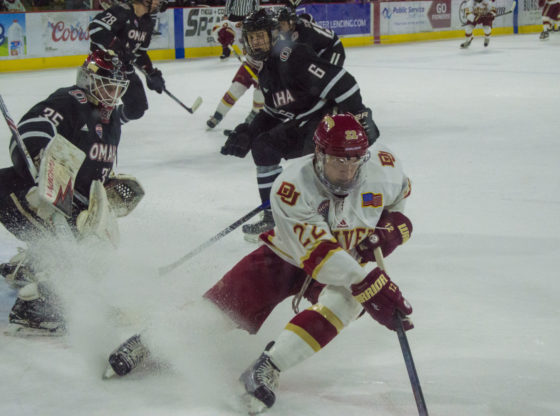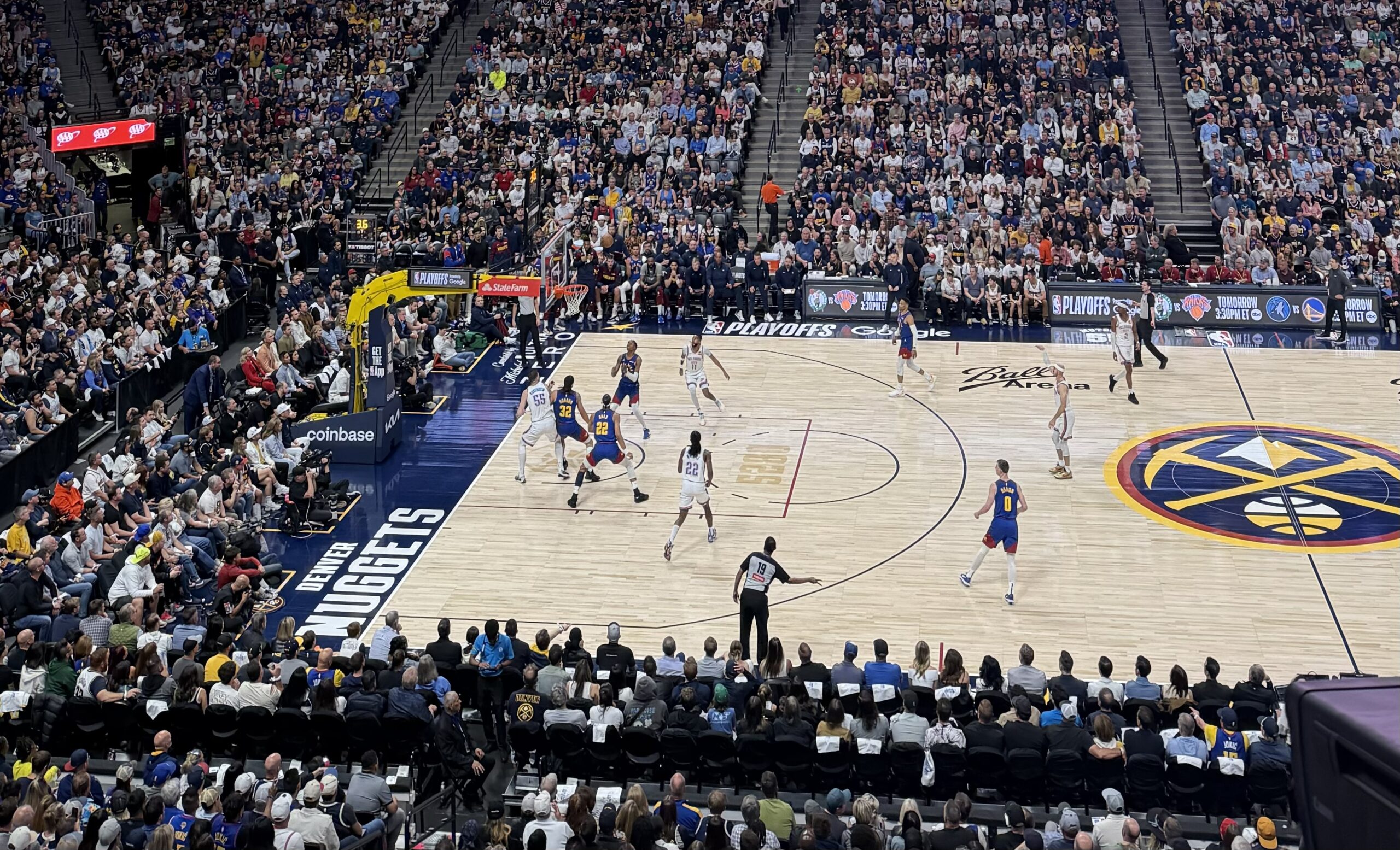What is it about throwing on uncomfortable shoes, covering one’s hands with chalk and climbing a couple of hundred feet up some colorful plastic ‘holds’ with nothing but a nylon/polyester blend harness, a locking carabiner and 60 meters of 9.8mm rope to save one from a fall that gets people so stoked? For sophomore Riley Patton, a new addition to the DU club climbing team, “it’s all about community.”
The team held their first official practice since before the pandemic Monday, Sept. 27, and hosted about 45 prospective team members, the most in the club’s history.
“We have a [recreation] team and a [competition] team. To join the teams, anyone is welcome to come to a couple of practices to see what it’s like. The dues for the recreational team are $50. It’s a little bit more of a relaxed team—a lot more focused on hanging out and having fun while you’re climbing,” said sophomore Seth Hudes, the club’s president as well as a former youth competitive climber. “[The] Comp[etition] team is going to be $300, and it’s a lot more focused on training and the comp style of climbing.”
The team focuses on three main climbing disciplines: bouldering, top rope and lead. Bouldering is the most basic form of climbing, where one ditches the harness and rope, puts on some climbing shoes, chalks up the hands and ‘sends it’ up a ‘problem,’ which is climbing lingo for the route taken to get to the top. Because the climber is not hooked in, bouldering problems rarely get higher than about 15 feet, and there is always padding on the ground (at a gym), or a crash pad if climbing outside, so falling is safe.
Top roping is when a rope is already anchored at the top of the climb. One end of the rope is attached to the climber’s carabiner, which is attached to the harness, while the other end is attached to a belayer. One starts climbing while the belayer feeds the climber more rope, and if they fall, the belayer uses their counterweight to help lower the climber safely to the ground.
Lead climbing is arguably the most intense form of climbing: there is still a belayer on the ground, but it is the climber’s job as the ‘lead’ to anchor in the rope onto different carabiners that are already attached to the wall or rock face.
Patton, who has been climbing for about two years, said the best part about the team is meeting new people that he would never talk to otherwise. “You not only gain a lot of friends, but you also gain a lot of problem-solving skills, and you get to know yourself more. You can really figure out your limits. It’s like therapy—-everyone should do it at least once in their life,” he said.
Sophomore Taylor Holland, this year’s club treasurer, echoed Patton. “All my friends I made last year were through climbing. I didn’t have in-person classes, so I had no way to meet people except for when I was at the gym. Climbing is such a small community, and everyone is really open and friendly,” she said.
“No background is required, even for the competitive team. You’re going to get out what you put into it. If you bring your A-game every practice and you’re training your butt off and trying your hardest every time, you will see huge improvements in your climbing,” said Hudes.
The team meets at Earth Treks in Englewood on Mondays and Wednesdays from 7 to 10 p.m. The club’s Instagram username is @du.club.climbing to learn more.











